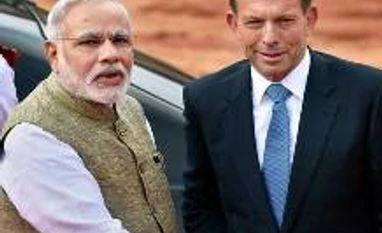The talks gathered momentum since the visit of Australian Prime Minister Tony Abbott in India in 2014. Both PM Abbott and Prime Minister Narendra Modi have given their weight behind the CECA and set the 2015 deadline.
India-Australia CECA could well be the first such broad-based free trade deal that the new government would enter into after coming to power last year in May. Ever since the talks started in 2011, both sides have had eight rounds of negotiations.
But in the bargain, Australia is also insisting on “same or greater concessions” that India has offered to Japan and South Korea in the respective bilateral trade pacts with them.
For India, the main concern is how the Regional Comprehensive Economic Partnership (RCEP) agreement pans out, in which Australia is also a member.
Besides, India and Australia have both locked horns over services. Both sides want a liberal visa regime and greater movement of its professionals into each other’s countries.
Bilateral trade between India and Australia presently stands at $15 billion compared to $160 billion worth of trade that Australia has with China.
Recently, Australian Trade Minister Andrew Robb stated that signing the CECA with India is their “number one priority”.
He also said during the India-Australia CEOs forum, the services sector is a crucial area for both the countries and Australia can contribute significantly in areas such as engineering, education, healthcare, contracting, construction, design and architecture.
)